This week in the Marvel Rundown, Ant-Man celebrates his swinging sixtieth in style, bringing together Ant-Men past, present, and future for a wild adventure across time in Ant-Man #1. There are minor spoilers throughout our main review, so jump down to the Rapid Rundown for some brief looks at Gambit and Wild Cards to avoid those pesky spoilers.
And as always, if you have any thoughts or questions, drop us a line in the comment section or stop by our socials @comicsbeat !
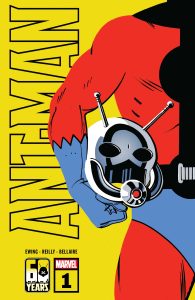
Ant-Man #1
Script: Al Ewing
Art: Tom Reilly
Coloring: Jordie Bellaire
Lettering: VC’s Cory Petit
Cover: Tom Reilly
In celebration of Ant-Man’s 60th Anniversary, Al Ewing and Tom Reilly team up with Jordie Bellaire and Cory Petit to deliver a comic that balances the desire to honor the past, while still pushing the world of Ant-Man forward in meaningful ways. The issue is split in two, tackling the strange future of 2549 in a pair of bookends and the distant past of 1962 in the main portion of the book.
The bookends to this issue are truly a sight to behold. The pages are narrated by an unknown voice, who explains to us that we’re entering the “MRVL™ narrative experience™,” which then guides us through the scene as if teaching us how to read a comic for the first time. It’s such an interesting trick that lets us know that this is going to be a far different comic than anything we’re really used to. The whole art team really helps to sell this, with Reilly’s more stripped-down style, Bellaire’s brighter palette, and Petit’s use of strange captions and mixed case lettering adding to the feeling that something is different.
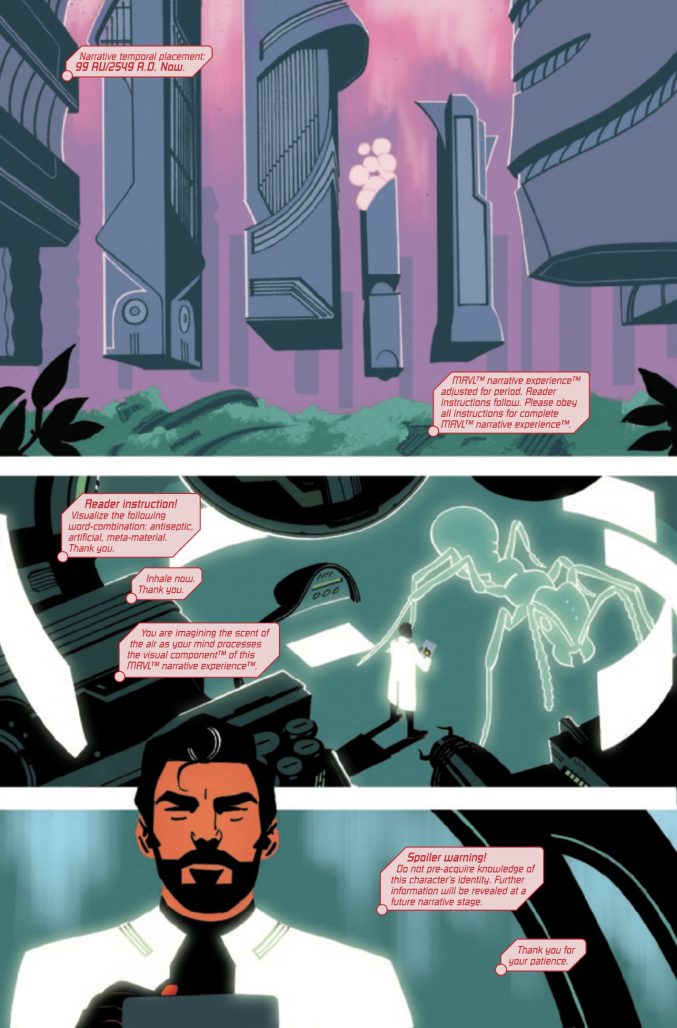
The shift between these bookends and the past is even more fascinating to look at, with the art team making some subtle and not-so-subtle choices to distinguish when exactly these two sections take place. When the book transitions to the 1960s, the panel borders become strongly defined and the colors become far more warmer and muted, as characters begin to use extinct thought balloons to express themselves. Petit’s lettering also changes slightly in the 1960s pages, moving from a more rigid and modernized typeface in the future to a much more classical style that looks closer to the handwritten letters of the true Silver Age.
While the wraparounds for this issue are framed as a bit of a puzzle, focusing on the building mystery of just who this future Ant-Man is, what the book really feels concerned with is how we build stories — specifically how a Marvel comic is constructed. Ewing has been exploring that kind of idea for a few years now, with stories like Ultimates, Avengers: No Road Home, and Defenders (just to name a few), really digging deep into the nature of comics stories and how the Marvel Universe has evolved to tell the shared stories it’s so fond of. He goes further here with the opening narrator, making us question how and why we read these stories
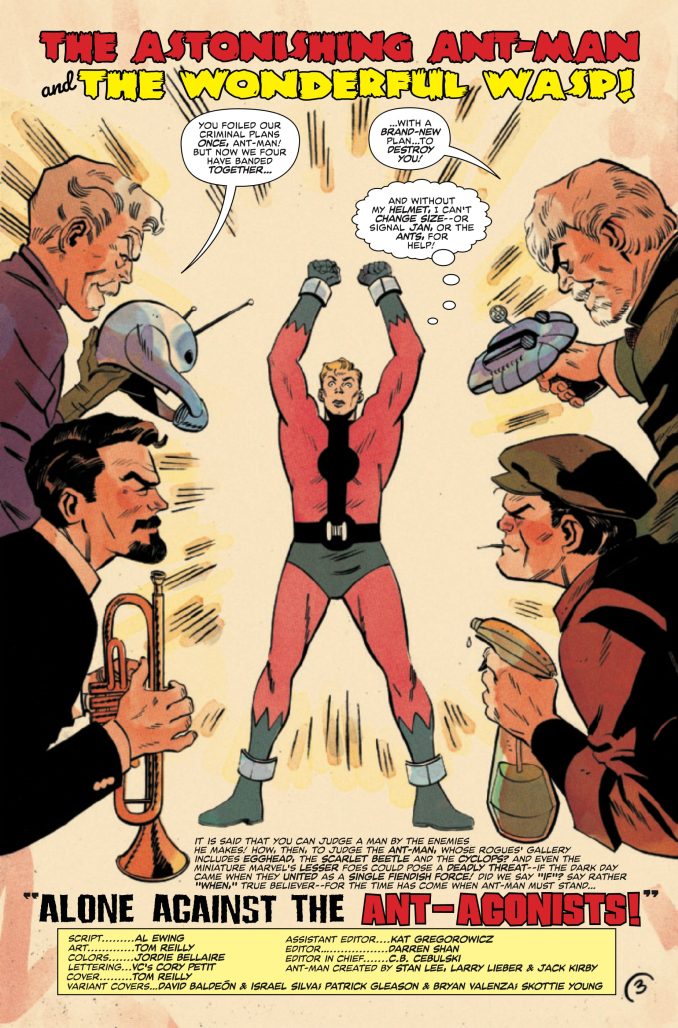
Ewing lets out his inner Stan Lee in this issue as well, really tapping into the over-the-top phrases that Lee used to pepper his scripts with. There’s a silliness to the events of the issue that ground the story in the more exaggerated world of Silver Age Marvel. Though, this doesn’t go too far off the rails that it turns into a bad copy of an old comic, which gives the issue this timeless feeling when flipping through it. Plus, being an Al Ewing book, he brings back a group of villains that haven’t been seen in any single comics (not counting OHOTMU entries) since 1963 and they are a hoot throughout.
Hank Pym is, absolutely, a bad man and the worst, but the story we get here works with the limits of the style and times of the 1960s. We get these little cameos from future Ant-Men Scott Lang and Eric O’Grady throughout the issue, which are great nods to the crazy history of Pym’s many identities and the Ant-Man name itself (not to mention whoever this new Ant-Man will turn out to be). I’m sure as we keep going through this mini, we’ll get to see just who this new Ant-Man is and (hopefully!) Pym having to grapple with his long and complicated legacy and the consequences of his actions
Final Verdict: Buy. Looking for a fun jaunt through Marvel history AND a peek at where they’re going next? Look no further
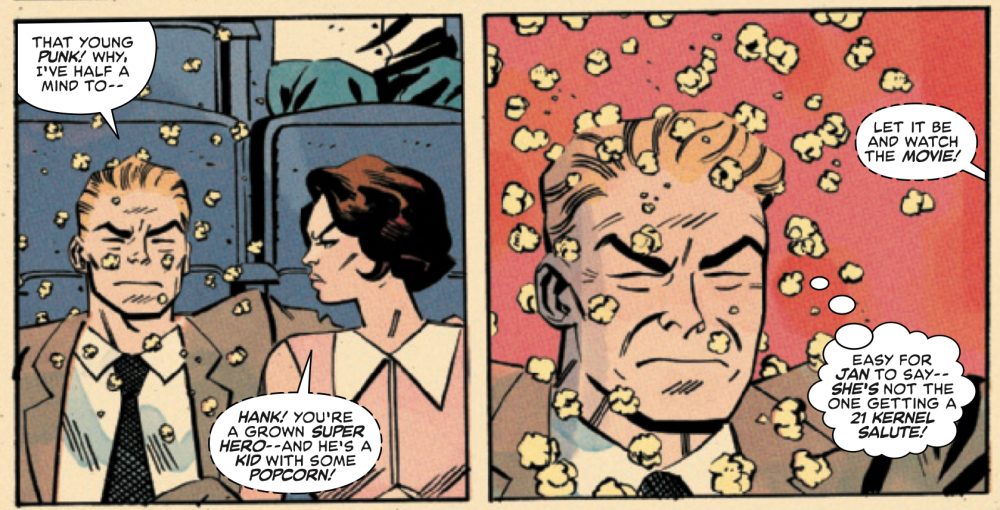
Rapid Rundown!
- Gambit #1
- In this issue by Chris Claremont, Sid Kotian, Espen Grundetjern, and Clayton Cowles, with a main cover by Whilce Portacio & Alex Sinclair, we get an exploration of “the previously unexplored time period only glimpsed during Uncanny X-Men #267.” The story follows a de-aged Ororo who is working with Remy after he rescued her from the Shadow King… In other words, this is another story that pairs an adult man with a young girl. Haven’t we had enough of this trope? Obi-Wan Kenobi, Star Wars: The Clone Wars, Logan, Thor: Love & Thunder, True Grit, Sin City, The Professional, A Song of Ice and Fire, and depending on Baby Yoda’s gender, possibly The Mandalorian, to name far from all the available examples. Look, I know that this is playing with established continuity, but considering how many opportunities there are to play with canon in the realm of Marvel Comics, from What If…?s to parallel timelines, I can’t help but feel like I’d have preferred to see a young Ororo being mentored by an adult woman. You know, like Aliens, Laura and Gabby in Wolverine, or La’An’s ongoing subplot on Star Trek: Strange New Worlds. Can’t win ‘em all, I guess. —AJK
- The Variants #2
- San Diego Comic-Con did me in. I had to quarantine after a COVID-19 scare, and then wound up in the ER with a pinched nerve and sinus infection. Let me say, thank god for pain meds. So, I must admit that I choose a comic that I knew I would like this week. I thought the reveal at the end of the first issue of The Variants by Gail Simone and Phil Noto, with letters by Cory Petit, was superb, and once again, this issue did not disappoint. As usual, Simone knocks it out of the ballpark (or should I say diner?) with her commentary on how the media treats powerful women and the interaction between the Jones-Cage women is out of this multiverse. On the first page in conversation with another Jessica, Jessica Greer, AKA Tigra, Jessica Jones-Cage recalls, “Someone’s always staring at the shiny women. They never get to forget it. I remember once, the Wasp caught a kid falling off a collapsing roof. Papers ran a shot of her butt crack.” This issue issue was everything that I hoped it would be and more. Noto’s art compliments Simone’s writing with the incredible details of the Jones-Cage residence in Jessica’s second romp with the Jessica variants, and I absolutely loved Dani Cage with her Tigra doll and oversized Iron Fist shirt. —ROK
- Wild Cards: The Drawing of Cards #1
- Adapted from the long-running series, Wild Cards: The Drawing of Cards is Marvel’s second go at bringing this beloved alternate history to the comic page. Unlike the first mini-series anthology, this series takes a nice slow burn introducing the reader to this world of super-powered beings. With over 30 years of content, primary writer Paul Cornell and artist Mike Hawthorne present the very tip of this intricate iceberg, laying out the groundwork for this very textured tapestry that spans decades and involves a vast cast of charters starting with two of the most pivotal ones here. As a long-time reader of this anthology series, co-created/edited by George R.R. Martin and Melinda M. Snodgrass, I love the world of the Wild Cards with its characters that have superpowers steeped in hard science, existing in a twisted version of our history. If you like superheroes mashed up with a show like For All Mankind or The Man in the High Castle, Wild Cards is for you. —GC3
Next Week: Edge of Spider-Verse #1, Moon Knight #14, and a plethora of Judgment Day tie-ins!



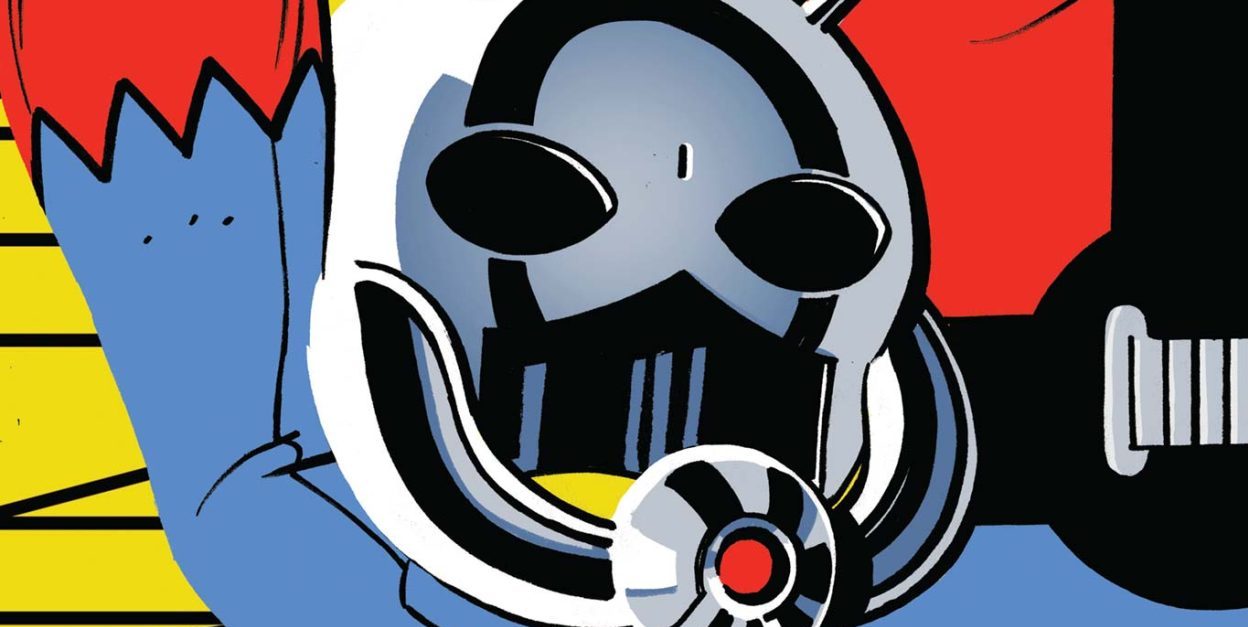
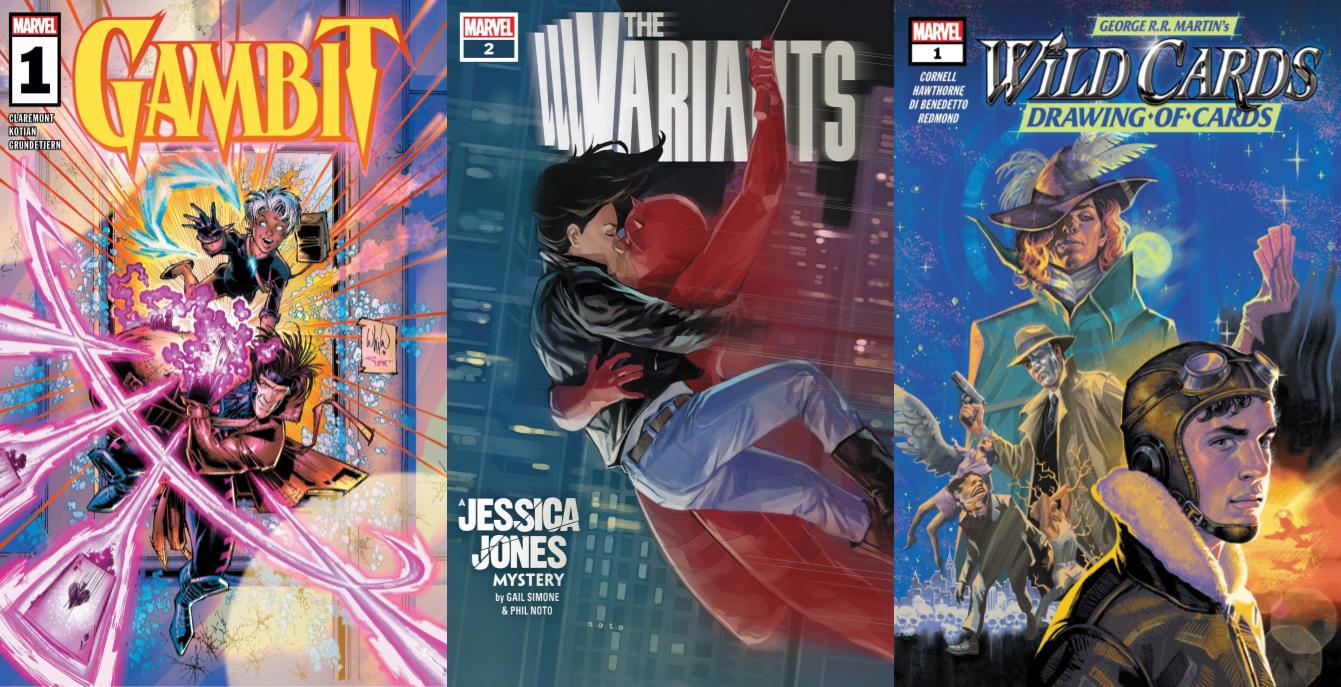
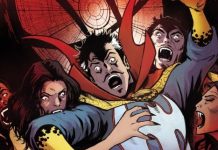

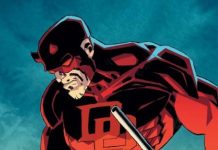






“Look, I know that this is playing with established continuity but why is it like a bunch of stuff that came out after that continuity happened but only pretty much in just one way” is an asinine baby criticism. Then again you didn’t actually address “Gambit’s” content you just scored Liberal points off one surface level aspect. Because that review was written for Twitter.
Thanks for reading, daniel!
I see your point about Hank Pym, but I think it’s unfortunate and proves how some fans/some creators get stuck on one version of a character and disregard others, really for no reason. The story in which Hank Pym slapped the Wasp, his then-wife, written by Jim Shooter, is over 40 years old. Other Avengers writers have since done a lot of work to rehabilitate Hank Pym, including Steve Englehart (who had Pym contemplate suicide, then reconsider and rebuild his life), Kurt Busiek (who had Pym and the Wasp reconcile) and Dan Slott (who made Pym Marvel’s “Scientist Supreme.”) Although I like Brian Bendis, I do think when it came to his use of Pym in the Avengers he too fell into the trap of ignoring more recent continuity to return Pym to his “loser” status, which then resulted in other writers picking up that baton. I’m willing to acknowledge Pym is a complicated character/hero, but insisting he is “a bad man and the worst” disregards four decades worth of OTHER stories about him and any subsequent positive character growth. It really reminds me of Grant Morrison’s “Animal Man” in which Morrison made the series about how comic characters are at the complete mercy of their creators and their whims. I’d also argue that fans should then be as as judgmental about other complicated characters/heroes. How about Bruce Banner/The Hulk? Pym slapped his wife once. The Hulk has killed how many times? Are you referring to Banner/Hulk as “a bad man and the worst” in your reviews? Tony Stark/Iron Man in a way was responsible for the Civil War AND the Secret Invasion AND the death of Captain America. Again, does he meet your definition of “a bad man and the worst”?
One more thought. Fans DO seem to get worked up about various male writers’ (namely John Byrne and Bendis) treatment of the Scarlet Witch. How she went nuts, tried to kill the Avengers, got rid of the mutants, etc. But in her case, fans want to IGNORE those negative incidents and focus on her heroism or on subsequent efforts to again make her heroic. But when it comes to Pym, it is the opposite. Fans seem to INSIST on preserving the negative Pym storylines and avoid the positive ones.
Comments are closed.